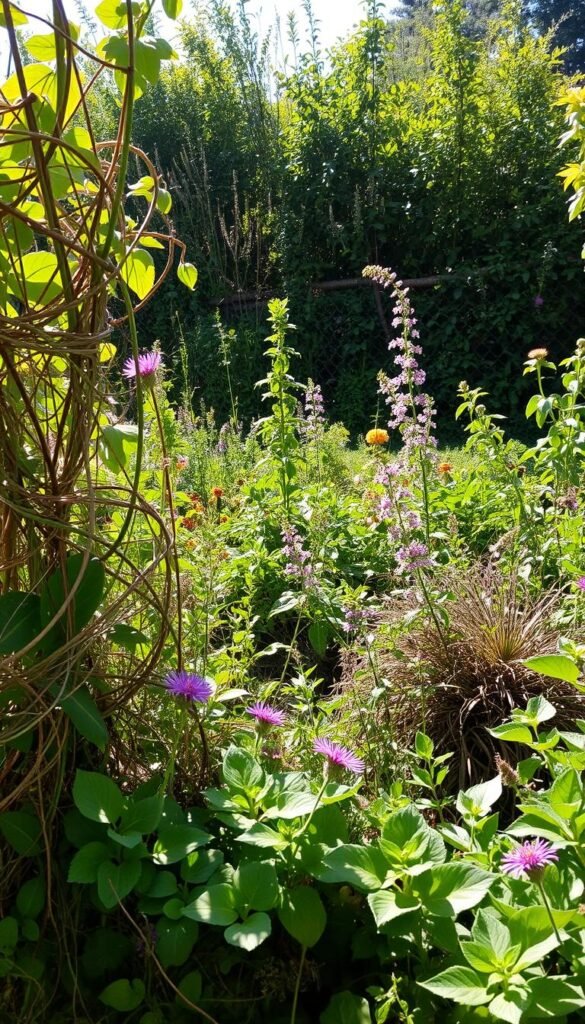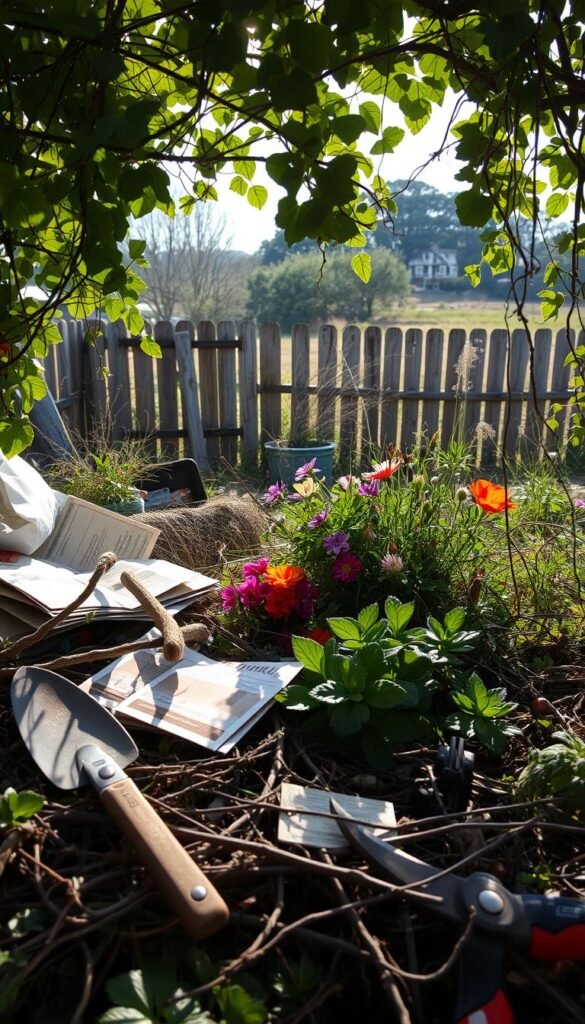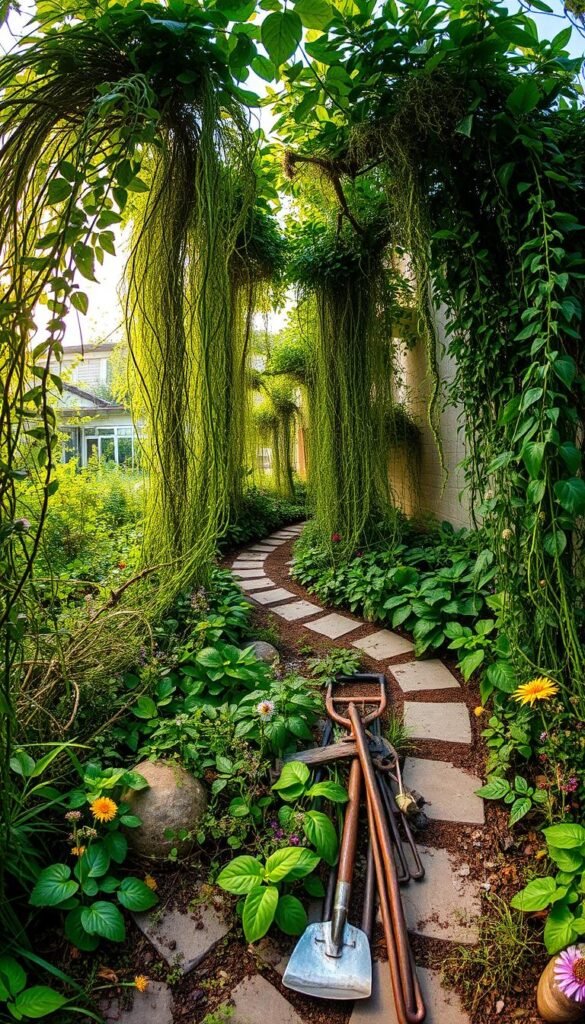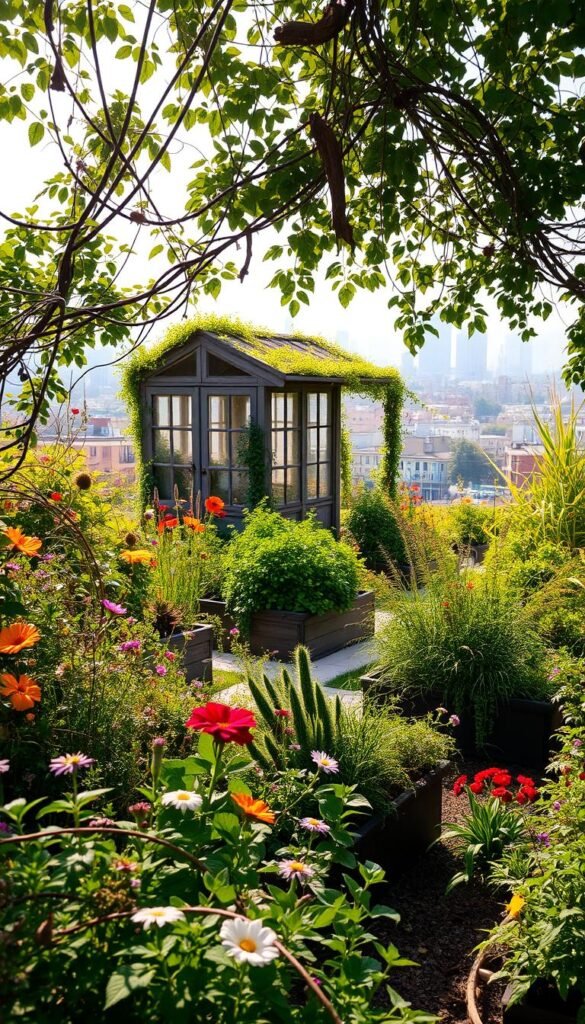What if your small outdoor space could burst with color, texture, and life—without strict rules? This guide shows how to blend creative freedom with smart planning to turn cramped areas into thriving retreats. Whether you’re working with a patio, balcony, or postage-stamp yard, you’ll discover how to let nature lead while keeping things intentional.
The chaos gardening trend, popularized on social media, celebrates randomness. Instead of perfectly spaced rows, you scatter seeds and let plants grow where they thrive. But here’s the twist: pairing this wild aesthetic with guerrilla gardening’s resourcefulness creates a low-effort, high-impact oasis.
Start by observing your space. How much sunlight hits the ground daily? Which corners stay damp after rain? Answers guide your seed choices. Mix flowers like marigolds with leafy greens or herbs—varieties that bloom at different times keep your garden lively all season.
Mother Nature does most of the work, but a little strategy ensures balance. Scatter native plant seeds first—they’re adapted to your climate and need less water. Then add a few vegetable or annual flower packets for pops of color. Lightly rake the soil to cover seeds, then let rain and sunshine take over.
Ready to break free from rigid garden beds? This step-by-step approach helps you create a self-sustaining ecosystem that’s both wild and welcoming. You’ll learn how to choose resilient plants, manage growth patterns, and enjoy a space that feels alive—not overly planned.
Introduction to Chaos Gardening Trends

Ever feel like strict garden plans suck the joy out of growing? You’re not alone. Chaos gardening—a free-spirited approach that swaps rigid layouts for seed-tossing spontaneity—is reshaping how people connect with their plots. Let’s dig into why this trend is sprouting everywhere from TikTok feeds to urban balconies.
What Is Chaos Gardening and Its Origins?
Born as a rebellion against perfectly manicured beds, chaos gardening encourages you to scatter seed packets and let nature decide what thrives. It exploded online, with TikTok videos tagged #chaosgardening racking up over 2 billion views. Even the Chelsea Flower Show featured “wild aesthetic” displays inspired by this movement.
Experts like Meg Grows Plants praise its stress-free philosophy: “It’s about rediscovering playfulness in planting.” Instead of measuring soil pH or spacing plants precisely, you embrace surprises—like sunflowers towering over lettuce or marigolds popping up between herbs.
Understanding the Appeal for Modern Gardeners
Why are people ditching traditional rules? Life’s hectic enough without worrying about straight garden rows. Chaos gardening cuts maintenance while boosting creativity. You might mix native plants with leftover vegetable seeds, creating a lively tapestry that changes yearly.
Sure, tall plants might shade shorter ones sometimes. But that’s part of the charm! This approach celebrates nature’s quirks while still yielding fresh food and flowers. Plus, it’s budget-friendly—those half-used seed packets finally get their moment.
Planning and Preparing Your Tiny Backyard Oasis

Unlocking your outdoor area’s potential starts with smart groundwork. Observe how sunlight dances across your plot and test your soil’s texture—these steps set the stage for a thriving, low-maintenance space where wild beauty meets intentional design.
Assessing Your Space and Sunlight Needs
Grab a notebook and track sunlight patterns for three days. Note which zones get full sun (6+ hours), partial shade, or stay damp. Sandy soil drains fast but needs compost, while clay holds moisture longer. Match plants to these conditions—sun-loving marigolds won’t thrive under that shady maple.
| Plant Type | Sun Needs | Soil Preference | Companion Plants |
|---|---|---|---|
| Lettuce | Partial Shade | Moist, rich | Chives, radishes |
| Marigolds | Full Sun | Well-drained | Tomatoes, basil |
| Mint | Partial Sun | Loamy | Cabbage, peas |
Selecting the Right Seeds, Soil, and Garden Tools
Baker Creek’s seed catalog suggests mixing quick-growing greens like arugula with slow-spreading flowers. Choose varieties labeled “self-seeding” or “drought-tolerant” for chaos gardening success. A sturdy rake and hand trowel simplify bed prep, while lightweight seed spreaders help distribute mixes evenly.
For tight spaces, try vertical planters or window boxes—perfect for growing vegetables in tight quarters. Remember: native plants like coneflowers need less fuss, letting you enjoy the chaos without constant upkeep.
Tiny Backyard Transformations: Combining Guerrilla and Chaos Gardening Ideas

Imagine a garden where every corner surprises you—sunflowers nodding beside basil, cosmos weaving through kale. This magic happens when planned design dances with wild spontaneity. Here’s how to craft a space that feels both artful and untamed.
Mixing Seed Packets for a Lush, Natural Look
Start with three golden rules: sun-loving varieties together, quick-growers paired with slow-spreaders, and tall plants at the back. Combine edible and ornamental seeds—think nasturtiums with spinach or zinnias alongside carrots. Scatter them in uneven clusters rather than rows for that meadow-like feel.
Try this winning trio:
- Marigolds (pest deterrent)
- Lettuce (fast harvest)
- Cosmos (vertical interest)
Rake soil lightly after broadcasting seeds. Water gently to avoid washing them into clumps. Within weeks, you’ll see a living tapestry emerge—one that changes subtly each year as plants self-seed.
Balancing Organized Design with Natural Chaos
Let aggressive growers like mint or oregano roam freely in containers. Reserve ground space for delicate herbs like cilantro. Use pathways or decorative stones to create visual structure, preventing your plot from feeling overwhelming.
Rotate plant groups annually. Last year’s tomato bed? This season, let wildflowers take over while veggies shift to sunnier spots. This mimics nature’s cycles while keeping soil nutrients balanced. Remember: even chaos thrives on thoughtful adaptation.
Your garden becomes a collaboration—you set the stage, but plants write their own story. The result? A space that’s alive with texture, flavor, and endless discovery.
Maintenance and Adaptation in Your Chaotic Garden

Your wild oasis thrives when you strike a balance between hands-off freedom and strategic care. While nature does most of the heavy lifting, a few smart habits keep your space productive and vibrant through every season.
Watering and Weeding Made Simple
Let rainfall handle hydration whenever possible. During dry spells, water deeply 1-2 times weekly using a soaker hose or watering can. Target the base of larger plants while letting smaller ones benefit from overspray.
Weed early and often—young intruders are easier to spot before they blend with your chosen plants. Pull invaders after rain when soil is soft, leaving roots of desirable seedlings intact.
| Task | Tools Needed | Frequency | Pro Tip |
|---|---|---|---|
| Reseeding | Hand spreader | Spring/Fall | Mix seeds with sand for even distribution |
| Thinning | Gardening gloves | When crowded | Keep strongest seedlings every 6-8 inches |
| Soil Check | pH test kit | Annually | Add compost if nutrients dip |
Seasonal Shifts Made Stress-Free
Track growth patterns each month. If tomatoes overshadow herbs, transplant them to sunnier zones next year. Rotate vegetable groups annually to prevent soil depletion—let flowers take over last season’s bean patch.
Keep a journal noting what thrives in different conditions. This helps refine your seed mix over time. For spaces needing extra love, consider revitalizing neglected spaces with hardy native species that require minimal care.
Remember: Your garden evolves like a living painting. Embrace surprises while gently guiding its wild beauty.
Wrap-Up: Celebrating Your Backyard’s Unique Journey
Your garden’s story isn’t written in straight rows but in vibrant, unpredictable bursts of life. By blending guerrilla gardening tactics with chaos gardening principles, you’ve crafted a space where structure and wildness coexist. Observing sunlight patterns, choosing resilient seeds, and letting nature guide growth transforms even compact areas into dynamic ecosystems.
Celebrate the beauty of imperfection. Tall sunflowers shading basil or marigolds peeking through kale aren’t mistakes—they’re proof your garden lives on its own terms. A light touch with watering and weeding preserves the balance, while seasonal adjustments keep the soil healthy and diverse.
Remember: the joy lies in the journey, not just the harvest. Each plant that self-seeds or thrives in unexpected corners adds character. Over years, your plot becomes a living diary of trial, error, and triumph.
So step back and admire what you’ve nurtured. Whether it’s a fiery zinnia patch or herbs spilling over pathways, your chaos garden reflects creativity meeting nature’s wisdom. Grab those leftover seed packets, scatter with abandon, and let the earth surprise you—again and again.






